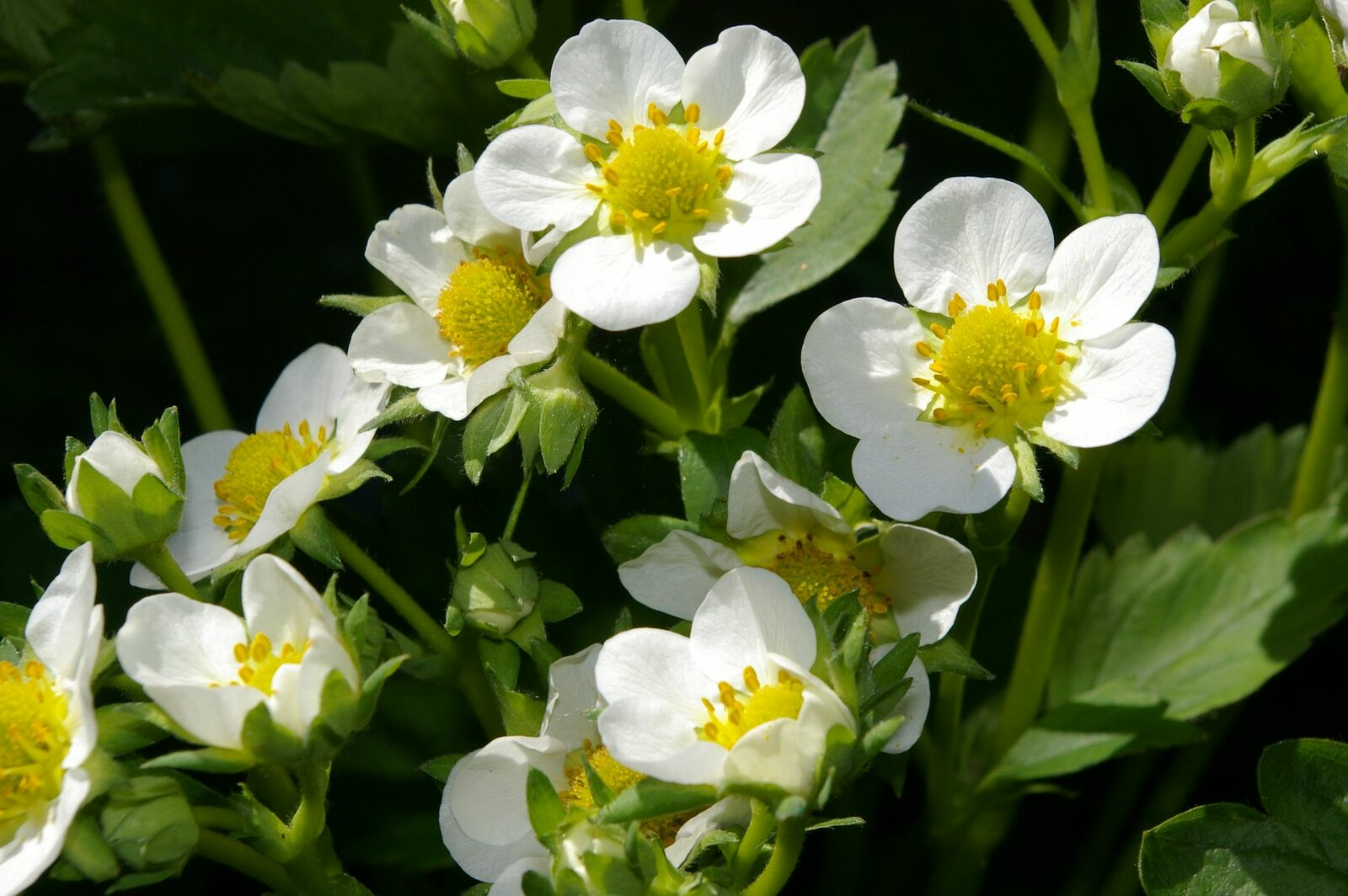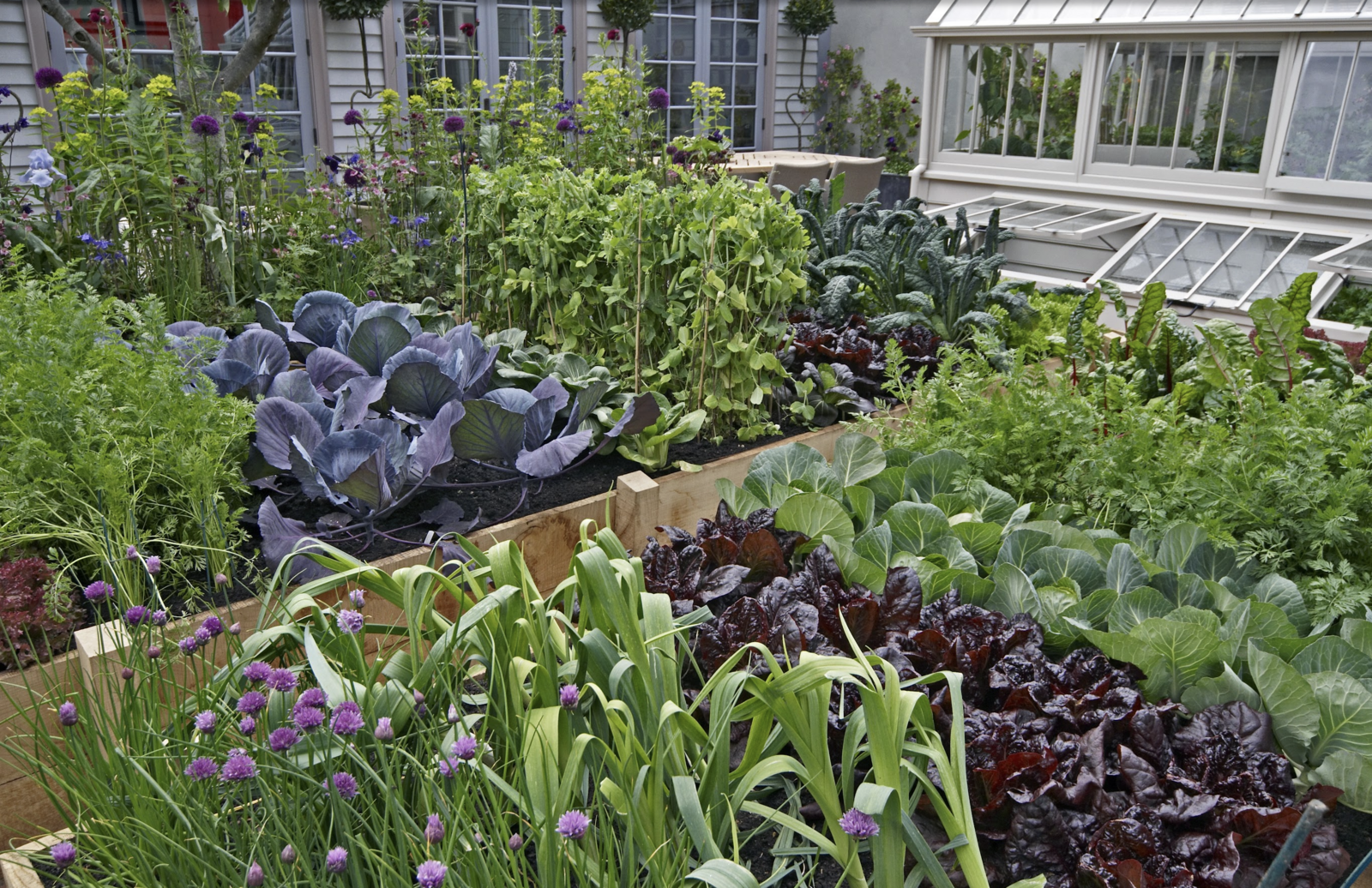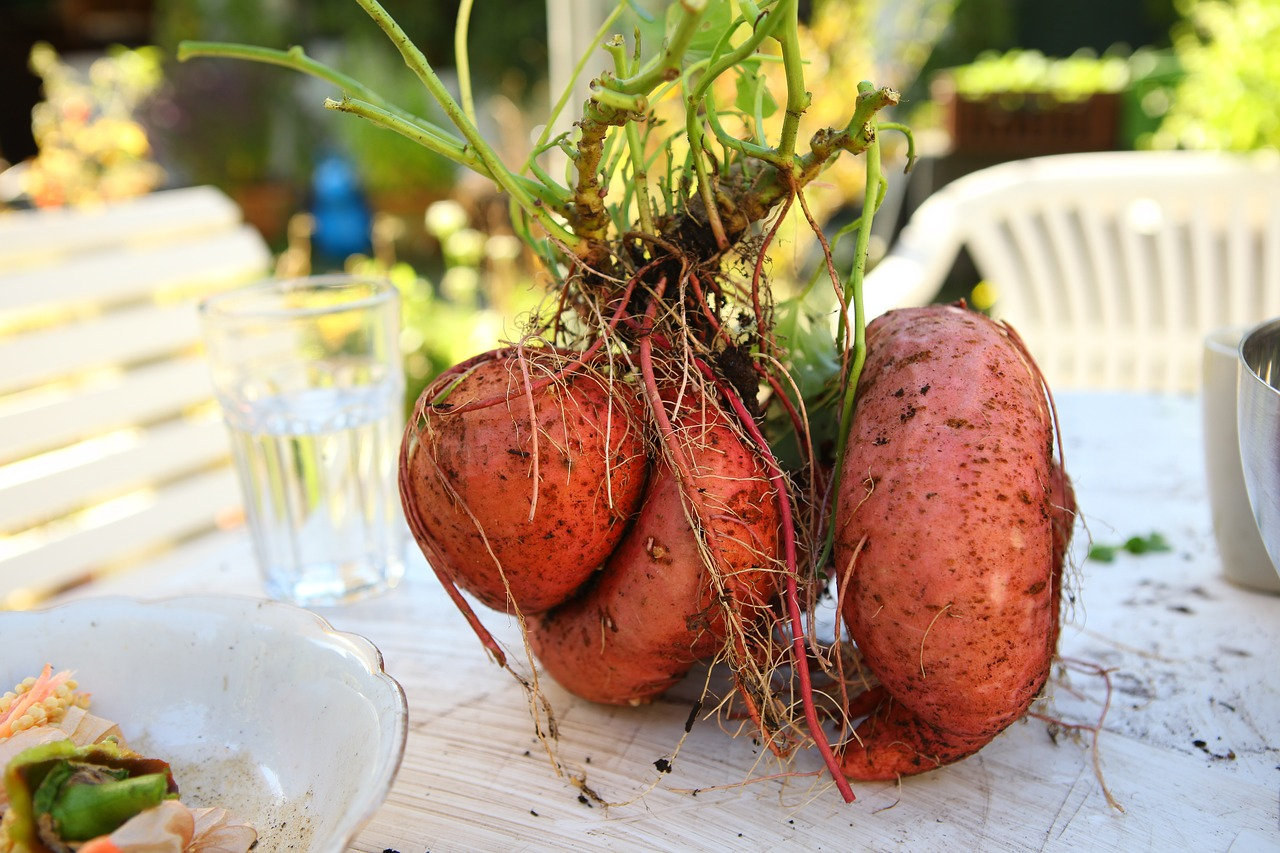
Uses for Rock Dust/Rock Flour in the Garden: Basalt Rock & Co.
Rock flour , also known as primary rock or stone flour, is finely ground powder made from rock. Clay or limestone is used as the starting material for this. Depending on the source rock, the rock flour differs in its ingredients and therefore its effect and application in gardening. It is an important means of naturally strengthening plants and improving the soil, which is mainly used in organic farming. In this article, you can find out what there is to know about rock flour and how it works and is used in the garden.
This Article Contains:
Quick Overview
Using Rock Dust in the Garden
- Select the appropriate rock flour depending on the soil type, pH value and planting
- Clayey soils tend to benefit from flours made from diabase, zeolite or bentonite
- Sandy soils, on the other hand, benefit from flours made from basalt rock and granite
- Using rock flour for the soil:
- Spread directly on the bed, work in and water or dissolve in rainwater and water
- Annual application between 100 and 500 g per m2/3.5 and 17.6 fl. oz. per 1.2 yd2
- Using rock dust for plants:
- Silicic acid strengthens plants, especially against sucking insects and fungal diseases
- Dissolve 200 - 300 g/7 to 10.5 fl. oz. in 10 L/21 pt of water; repeat the treatment regularly
What Is Rock Flour?
Primary rock flour is legally defined as a soil additive. It acts mainly as a soil improver and as a Plant Strengthening Agent against pests and diseases. As a fertilizer, rock flour is usually only used as an additive to compost or plant slurry, for example. Here, however, it serves as food for the microbes instead of providing direct plant nutrition. This reduces rotting and unpleasant odors. Rock flour is not a classic fertilizer because it contains few main nutrients such as nitrogen and phosphorus. Horn meal is more suitable as a fertilizer as it is rich in nitrogen. In contrast, rock flour mainly contains a lot of magnesium, calcium, iron, potassium and silicic acid as well as trace elements such as molybdenum and manganese.

Depending on the content of alkaline ingredients such as calcium and magnesium, rock flours are divided into alkaline-acting and acidic-acting rock flours. Alkaline rock flours with a high proportion of calcium are made from diabase, zeolite or bentonite, for example. These flours are used to improve the soil in order to counteract soil acidification (Liming). In contrast, basalt and granite flours, for example, are acidic stone flours that lower the pH value in the soil.
Using Rock Flour as Fertilizer: Different Rock Dusts
| Rock Flour Type | Application |
|---|---|
| Limestone | rich in calcium (counteracts soil acidification); high in silicic acid (strengthens plants) |
| Zeolite | Improves water and mineral retention in the soil; has an alkaline effect and should only be used sparingly at a pH above 8 |
| Bentonite (claystone) | Enriches clay in the soil and thus improves water and nutrient retention; especially for sandy soils |
| Basalt | For alkaline soils to lower the pH (improved nutrient availability, especially of phosphorus); good for compost (promotes decomposition); suitable for all garden soils |
| Granite | for alkaline soils to lower the pH (improved nutrient availability, especially of phosphorus) |
Depending on the Garden Soil, you should choose the right rock flour for you. Clayey soils tend to need flours with an alkaline effect, while sandy soils tend to benefit from clay stones. To ensure you take the right measure, you should first measure the pH value in your soil and determine the soil type.
Using Rock Dust in the Garden
Depending on the soil type and pH value, you can choose a suitable rock flour to improve and rejuvenate the soil. This is because most garden soils acidify over time and the pH value drops. In an acidic soil, nutrients are less available and biological activity is low. The same applies to an overly alkaline environment. You can create good conditions for your plants and soil inhabitants with rock flour.
Naturally Improve Garden Soil With Rock Powders
Rock flour provides the soil with minerals and trace elements that promote biological activity in the soil. This builds up more humus and in turn makes nutrients available to plants. In addition, the soil structure improves as humus builds up. The soil can store more nutrients and water. Rock powders containing clay in particular have great potential to improve the water and nutrient retention capacity of your garden soil. Due to its ability to promote microbial activity and thus the conversion of organic matter, rock flour is also often added to compost.

Tips for Soil Care With Rock Powders
- Spread the rock flour on your beds and work it in with a rake. It's best to do this on a windless day and try not to breathe in the dust! The particles are super small and harmful to your lungs. Finally, water well once. Rock flour needs to dissolve in water to be available in the soil. Alternatively, you can dissolve the rock flour in water and water directly.
- Dust your soil annually with between 100 and 500 g per m2/3.5 and 17.6 fl. oz. per 1.2 yd2, depending on the soil type, soil pH and planting. Limey soil up to about 150 g per m2/5.3 fl. oz. per 1.2 yd2 and acidic soil between 200 and 500 g per m2/7 and 17.6 fl. oz. per 1.2 yd2 (the exact amount is usually indicated on the packaging). Lime-sensitive plants such as rhododendrons and blueberries should only be watered moderately with rock flour.
- The rock flour is often added to the compost and thus enters the soil indirectly via fertilization in spring or autumn.
- Supplementary measures such as mulching or green manuring improve the effect of rock flour on the soil. In general, all these measures should improve the soil in the long term and sustainably. Rock flour is not suitable for compensating for a lack of nutrients in the short term.
Rock Flour for Plants: Combat Pests and Diseases
Due to its high silica content, rock flour also has a plant-strengthening effect. Silicic acid strengthens the cell walls of plants and thus protects them from sucking pests and fungal diseases. In addition, pests - but unfortunately also beneficial insects - are injured by the fine dust and prevented from breathing and moving. In this way, rock dust prevents an infestation, but can also help to get rid of the hungry visitors in the event of an infestation. However, as rock dust has a non-specific effect on all insects in your bed, you should use it carefully. Therefore, do not spray during the bee flight season or in areas in your garden with many beneficial insects. Rock flour also has an odor-inhibiting effect, which means that flying insects can no longer properly perceive aromas and attractant hormones.

Tips for Using Rock Dust Against Pests & Diseases
- Preventive plant protection, especially against fungal diseases and sucking pests: To strengthen the plant, apply the rock flour dissolved in water to the leaves and other parts of the plant; spray regularly; preferably in the morning or after rain, so that silicic acid dissolves directly and can be absorbed by the plant; never before rain, because then it will simply be washed off; dissolve about 200 to 300 g/7 to 10.5 fl. oz. of rock flour in 10 L/21 pt of water
- Rock flour against pests such as Colorado potato beetles: In the event of an infestation, apply the flour to the plant in powder form (with a powder sprayer or a broom); this only works in dry conditions and must be repeated until all pests are gone
- Rock flour against snails: Build a 5 to 10 cm/2 to 4 in wide protective wall of rock flour around seedlings
- Rock flour and nettle liquid manure against voles: Mix the two and tip it into the burrows of the voles
- Rock flour for woody plants: Protective tree coating made from clay flour for the winter (protects against frost cracks in the bark and seals up loopholes for pests)
Rock flour can be used in a variety of ways in the garden and can be a valuable tool in the garden. Unfortunately, rock flour is not something you can easily make yourself. This is because grinding rocks requires a lot of energy and suitable mills.
However, you can easily obtain rock flour from the internet or specialist retailers. In our Fryd store, you will find various organic-quality rock flours. Take a look!
If you have any questions or comments, please write to us at magazin@fryd.app.
Would you like to receive helpful gardening tips all year round and plan your own beds optimally? Then register here or download the Fryd app for Android or iOS.
Fryd - your digital bed planner
Cover image by Dr. Eugen Lehle on Wikipedia (CC BY-SA 3.0).
Marie
Current Topics in the Community

#red , #tuesday

Liked 1 times
#testpostcount

Dec 2025
Popular Articles

Companion Plants for Carrots: What (Not) to Plant With Carrots

Companion Plants for Celery : What (Not) to Plant With Celery?

Strawberry Types: List of Best Strawberry Varieties

Companion Planting With Strawberries: Companion Plants and Planting Plan

Basil Varieties & Types at a Glance

What to Plant With Cabbage: Good and Bad Companion Plants

Fertilizing Strawberries: Home Remedies & Natural Fertilizers at a Glance

Growing Sweet Potatoes: Tips on Cultivation & Companion Plants

Companion Plants for Kitchen Herbs: Chives, Parsley & Co

What Herbs Can Be Planted Together?
FAQ
What is rock dust used for, and how does it work in the garden?
Rock flour is powdered rock containing essential minerals and trace elements. It improves soil structure and promotes plant growth.
How and when should rock flour be applied?
Sprinkle it directly onto the soil or mix it into compost. Applying it in spring or autumn is ideal. You'll find more information here in the article.
Which plants benefit from rock flour?
Heavy feeders like tomatoes, potatoes, and pumpkins particularly benefit from the nutrients in rock flour. But any plant will benefit from a healthy and fertile soil.
How much rock flour should be used?
A thin layer between 100 and 500 g per m2/3.5 and 17.6 fl. oz. per 1.2 yd2 is sufficient, depending in soil quality and plant needs.
Can rock flour really increase plant resistance?
Yes, the minerals strengthen plant tissue, making plants more resistant to diseases and pests.